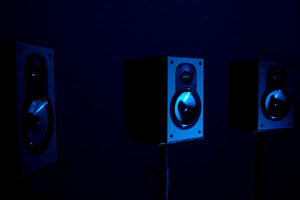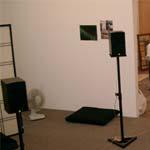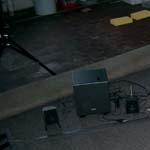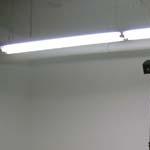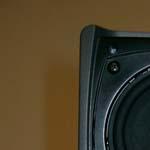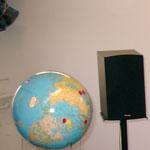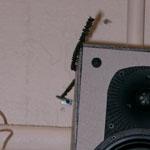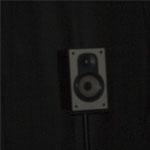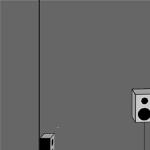"Deep Earth Dome" (2006-2008) was a sound installation and seismic listening space in Studio 37 at Joy Street Artists in Somerville, MA. The project was motivated by a simple question that haunted me for years: “If you could stand inside the Earth, what would you hear?”
The text below was written at the time of the project.
This installation invites the visitor on a journey through time, space, and sound, deep into the interior of the Earth, on an accelerated time scale to hear the natural sounds of the solid Earth itself.
The visitor approaching this piece encounters a doorway into semi-darkness from which a vague low rumble emanates, a sound akin to the long rolling reverberance of a distant waterfall. Ducking under a low opening, the visitor crosses a threshold into an entirely different world, a swirling soundscape of sound projected from every direction.
The perimeter of the space is defined by eight loudspeakers, arranged in the faint skeletal outline of a dome, mirroring the spherical shape of the Earth itself. The speakers play 20 minutes of continuous and precisely synchronized recordings of vibrations at the Earth’s surface, obtained from recording stations of the IRIS/IDA Global Seismographic Network.[1] To make the original seismic signals audible, the recordings have been speeded up several hundred-fold: the sounds the visitor hears unfolding in about 5 minutes correspond to the vibrations recorded over an entire day of real Earth time.
Over the course of a few minutes, the visitor hears dozens of earthquakes, large and small, from around the globe, as well as the ebb and flow of storm-generated ocean surf noise, all against a steady backdrop of the Earth’s own characteristic background noise. Delicate ticks and pops, distant booms, diffuse whoops, crackles, and whistles appear, only to slip away again into the background. Some sounds are fleeting and confined to one corner of the space, while others travel across the full breadth of the dome. The attentive listener will, in fact, discover layer upon layer of hidden structure within the sound, inviting the listener to progressively deeper levels of interior experience.
Upon exiting the dome, the visitor leaves behind the complex panorama of deep Earth sound, and returns once again to the familiar, lighted, surface world. The visitor is left with the memory of a journey into the depths—both inner and outer—which can be recalled at any time, with every step he or she takes on the Earth.
Stratum 1: Breath is the first in a planned series of Deep Earth Dome installations. In this piece the recordings have been accelerated so as to bring one of the Earth’s most fundamental modes of vibration — its so-called “breathing mode” — in sync with the normal rate of human respiration. As the visitor settles into this unique immersive sound experience, he or she is thus guided inward towards a sacred realm in which the most basic rhythms of the human body follow those of the planet itself: as we breathe the Earth, so it breathes us.
Subsequent Deep Earth Dome installations will be based on alternate time scales, to highlight other aspects of the subtle and deep connections that exist between human and cosmic rhythms.
